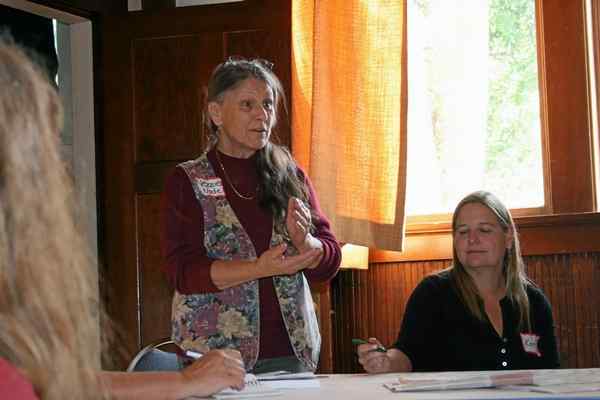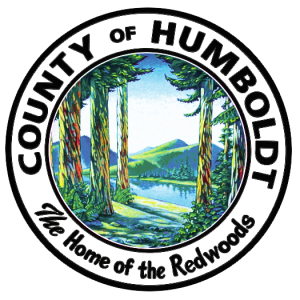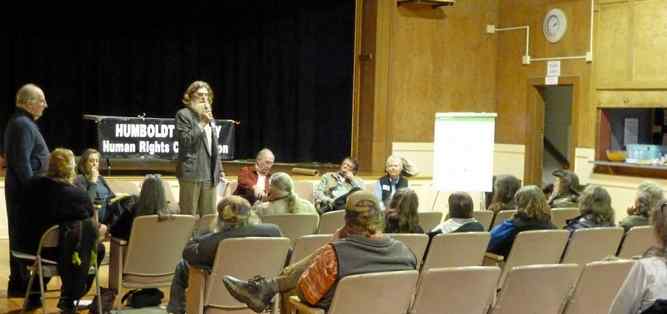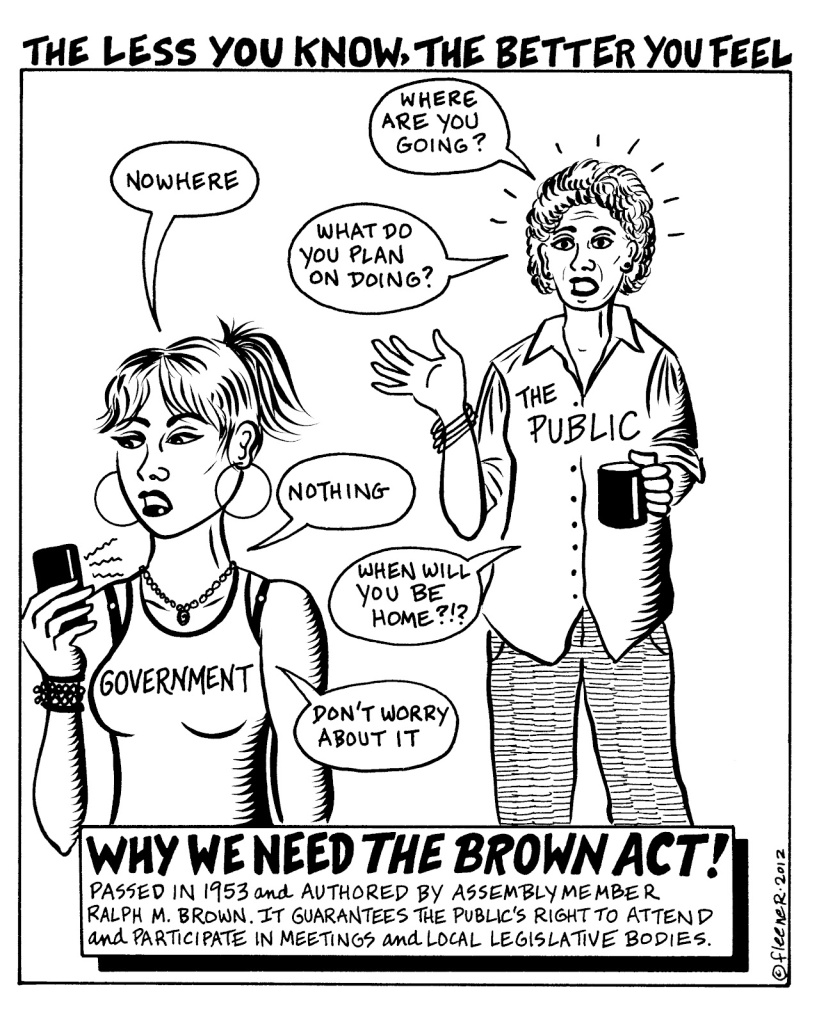
I spoke to Humboldt County Human Rights Commission Chairman Jim Glover twice this past week. I called him last Friday to invite him to be a guest on my radio show, Monday Morning Magazine, airing Monday, May 29 from 7-9am on KMUD, Redwood Community Radio (streaming live, and archived, at http://www.kmud.org ). I called because I wanted Jim to talk about the work that the HRC does on behalf of the Board of Supervisors. Having been to a couple of their meetings, I’ve gotten a sense of how the HRC operates, and in one sense, I think they do a great job, for the Board of Supervisors.

On the other hand, I don’t think the HRC does a very good job at all for the people of Humboldt County, and they do a tragic disservice to people who have been victims of human rights abuse. I became aware of the Humboldt County Human Rights Commission after a wave of vigilante violence swept Southern Humboldt last Fall. We had several mysterious deaths. One man was beaten so severely that he spent weeks in the hospital. He will probably never recover completely. Several others were assaulted, robbed and terrorized by vigilantes who, victims allege, identified themselves as “working with” the Humboldt County Sheriff’s Department, and handed out eviction notices bearing the Humboldt County Sheriff’s Department logo.

Multiple victims came forward with physical evidence, corroborating stories, and names of perpetrators, but deputies in the Garberville Substation of the Humboldt County Sheriff’s Department refused to take a report from at least one of the victims. Because the perpetrators identified themselves as working with the Sheriff’s Department, and the Sheriff was not at all helpful to the victims, the victims, terrified of reprisal from both local vigilantes and law enforcement, turned instead to the Humboldt County Human Rights Commission.

In retrospect, you would have to say that reporting these crimes to the HRC was a waste of time, at best. “At best,” because these reports did not get shared with the commission for several months, but were almost immediately leaked to 2nd District Supervisor, Estelle Fennell, a clear violation of the confidentiality agreement in which these reports were filed. Nezzie Wade chaired the HRC at the time. She was so shocked and appalled that the HRC’s own rules on handling correspondences had been completely disregarded and that a severe breach of confidence had occurred, that she refused to participate in the HRC any further, and walked out in the middle of the meeting.

In her resignation letter, Nezzie Wade puts it like this, “At the November regular meeting I stated my intention to resign from the commission and left the meeting experiencing great frustration due to the continuing improper conduct of business. I have struggled with my frustration and participation on the commission over this lack of consistency and follow through with protocols, since my appointment to the commission.”

She sites the handling of these reports of vigilante violence in Southern Humboldt specifically: “It was in relationship to the message line calls and email communications retrieved by a commissioner acting as the courier for the commission, that I became extremely inflamed over the course of two consecutive meetings (October and November) in which the reports and communications sent to the commission describing instances of vigilante violence in Southern Humboldt reported to the commission via the phone line and email were not revealed to the commission in a way that allowed the grave situations described in these communications to be disclosed to the commission. A violation of privacy and confidentiality occurred when the commissioner acted upon the information in the communications without authority from the originators or the commission, by disclosing the names of complainants and their issues to parties outside of the commission thus compromising the investigation and the ethical standing of the commission in the community.”
She added, “A real travesty occurred when the actual situations of violence were minimized and reported in their entirety as ‘possible vigilante activity’ rather than actual occurrences with the documentation. The standard forms for intake on the message line were never submitted to the secretary nor email declarations of the victims of vigilante violence as clarified when I requested copies of them from the secretary, received no response prior to the November meeting, and was informed by the secretary that the commission did not have them; thus, no one had access to the information except the commissioner acting as courier at that point, nearly two months beyond the initial reports. It was in this context that I stated my intention to resign which I am now acting upon.”
“All of the above highlights the ongoing lack of following appropriate protocols and my great frustration with the Human Rights Commission. One need only review the meetings, comparing the agendas for each meeting with the post meeting minutes. There are many inconsistencies, and the motions are not recorded or business is conducted without following the required processes. Much is omitted. The commission clearly needs training in how to do business. In addition, the lack of term limits has resulted in an atmosphere in which groupthink is pervasive and new members of the commission are often led into following poor methods of handling commission business;for example, the way in which message line calls are taken in, responded to and reported upon.”

Accompanying her letter of resignation, Nezzie Wade submitted a list of changes to the HRC that she’d like to see implemented. In it, she gets to the heart of why most people think the HRC helps victims of abuse, when in reality, they mostly produce resolution copy for the Board of Supervisors. She begins by quoting the purpose, responsibilities and obligations of the Humboldt County Human Rights Commission, as they appear in the Humboldt County Code:

The purpose of the HRC is to promote tolerance and mutual respect between all persons, and to
promote positive human relationships for the purpose of insuring public peace, health, safety and the
general welfare (Ord. 1023, § 5, 4/22/75; Amended by Ord. No. 2294. 2/25/03)
The responsibilities of the Human Rights Commission are enumerated in Humboldt County Code
Section 228-6 (Ordinances 1023 and 2294) and Article VI of the HRC Bylaws
1. To foster mutual respect and understanding among people, including people subject to prejudice
and discrimination due to race, creed, color, national origin, ancestry, physical disability, mental
disability, marital status, gender, sexual orientation, socioeconomic status, civic interest, or any
other factors.
2. To make any studies in any field of human relationships in the County as, in the judgment of the
Commission, will aid in effectuating its general purposes.
3. To inquire into incidents of tension and conflict among or between people, including people
subject to prejudice and discrimination due to race, religious creed, color, national origin,
ancestry, physical disability, mental disability, marital status, gender, sexual orientation,
socioeconomic status, civic interest, or any other factors, and to take action by means of
conciliation, conference and persuasion to alleviate such tensions and conflict.
4. To conduct and recommend any educational programs as, in the judgment of the Commission,
will increase good will among inhabitants of the County and open new opportunities into all
phases of community life for all inhabitants.
The Human Rights Commission shall discharge the following obligations as enumerated in Humboldt
County Code Section 228-7 (Ordinances 1023 and 2294) and Article VII of the HRC Bylaws.
1. To hold conferences and other public meetings in the interest of the constructive resolution of
tensions, prejudice, and discrimination among or between groups of people, including people
subject to prejudice and discrimination due to race, religious creed, color, national origin,
ancestry, physical disability, mental disability, marital status, gender, sexual orientation,
socioeconomic status, civic interest, or any other factors.
2.To issue any publications, recommendations and reports of investigation as in its judgment will
tend to effectuate the purposes of this chapter.
3. To enlist the cooperation and participation of a variety of people, including people subject to
prejudice and discrimination due to race, religious creed, color, national origin, ancestry,
physical disability, mental disability, marital status, gender, sexual orientation, socioeconomic
status, civic interest, or any other factors, industry and labor organizations, media or mass
communication, fraternal and benevolent associations, and other groups in an educational
campaign devoted to fostering among the diverse groups of the County mutual esteem, justice
and equity.
4. To encourage and stimulate agencies under the jurisdiction of the Board of Supervisors to take
any action as will fulfill the purpose of Humboldt County Code Section 228-6 (Ordinances 1023
and 2294.)
5. To submit an annual report to the Board of Supervisors.

As anyone who reads the Humboldt County Code can see, the Humboldt County Human Rights Commission has a lot of responsibilities and obligations to the people of Humboldt County, even though they only serve an advisory role to the Board of Supervisors, and have no budget. From watching them in action, I can see that they take their role as advisers to the Board of Supervisors very seriously. Conversely, I also see that they fail miserably in their obligations and responsibilities to the people of Humboldt County. Nezzie Wade put it this way:
“While the statement of purpose focuses on the Commission as an organization to promote tolerance and mutual respect between all persons, and to promote positive human relationships for the purpose of
insuring public peace, health, safety and the general welfare, as a human rights organization the HRC
has been unable to truly effect a positive outcome in this regard because it has been absorbed
essentially with promoting ‘nice’ relationships with the BOS and others by keeping any conflicts at a
minimum and marginalized, thus not allowing for the expression of the discord within our community
as presented to the Commission in various ways, highlighted recently by the inappropriate handling of
communications received from members of the Southern Humboldt community regarding several
incidents of vigilante violence towards the homeless, which in no way has served to create an
atmosphere of mutual respect or public peace, safety and the general welfare.”

Basically, we had a series of violent crimes, with victims, evidence and witnesses to back them up, that implicate individuals within the Sheriff’s Department and respected community members, but rather than being investigated by law enforcement and prosecuted by the DA, these cases have been sucked into the black hole we call “the Humboldt County Human Rights Commission,” never to be heard from again, except in leaks back to the perpetrators. These crimes remain uninvestigated, and the perpetrators walk among us today.

Fast-forward to April 25 2017, Chris Weston, a recently appointed HRC Commissioner, called County Council’s office to inquire as to whether a particular email, sent from HRC Chair Jim Glover, to other HRC Commissioners only, was compatible with the Brown Act. Like Nezzie, Chris Weston had become frustrated with the obstructionism, unprofessionalism and lack of protocol on the HRC, and with Chairman Jim Glover in particular. On April 24, Weston talked with Glover about the email in question, and encouraged Glover to report the incident himself, but received no response. So, Commissioner Chris Weston felt obligated to report the email, which he said: “appears to intentionally hide a ‘back room deal’ among HRC members absent public knowledge,” to County Council.

Within two hours of placing that call to County Council’s office, Chris received this text message from Estelle Fennell: “effective today’s date April 25 2017 your participation on the commission is no longer required and I am rescinding your appointment.” Chris Weston was removed from the HRC by Estelle Fennell, less than two hours after reporting a probable Brown Act violation to County Council. It looks suspicious.

Here’s how Chris described it in his letter to District Attorney Maggie Flemming, dated April 28th: “If a commissioner is fired without prior discussion of any concerns or opportunity to rectify any shortcomings, it can easily be construed as unfair and inconsistent with the most rudimentary standards of free speech (First Amendment) due process (Fifth Amendment), powers (Ninth Amendment), Rights (Tenth Amendment) and Equal Protection Under the Law (Fourteenth Amendment) enshrined in the U.S. Constitution. If a commissioner appears to have been fired for inquiring about consistency of certain actions with the Brown Act, it sends a powerful message to all commissioners and society in general that the Brown Act is not seriously the law and flouting the Brown Act is allowed and protected by the powers that be in Humboldt County.”

It just gets darker, and deeper. HRC Chairman Jim Glover called me back on Monday, to decline my invitation to be a guest on the radio show, saying “It wouldn’t be proper” as though he were declining the interview on principle. I called him on it, citing the statement he made to the Times-Standard, asking why KMUD listeners don’t deserve the same consideration. He asked me who else would be on the show. I told him, that Chris Weston, Nezzie Wade and Debra Carey, would also be on the air live with him. At that, Jim Glover resolutely declined my invitation.

I have invited 2nd District Supervisor Estelle Fennell to join us live on the air for this discussion as well. Estelle is a regular, if somewhat erratic guest on Monday Morning Magazine, and I do hope she will join us. After all, these violent crimes happened in her district and she appointed Chris Weston to the HRC to begin with. I’d think she’d be very interested in this, and I know that she could answer some important questions. I hope you’ll join us for an hour long discussion of , from 8-9am Monday, May 29, live on Redwood Community Radio, KMUD.





















































